Physical Address
304 North Cardinal St.
Dorchester Center, MA 02124
Physical Address
304 North Cardinal St.
Dorchester Center, MA 02124
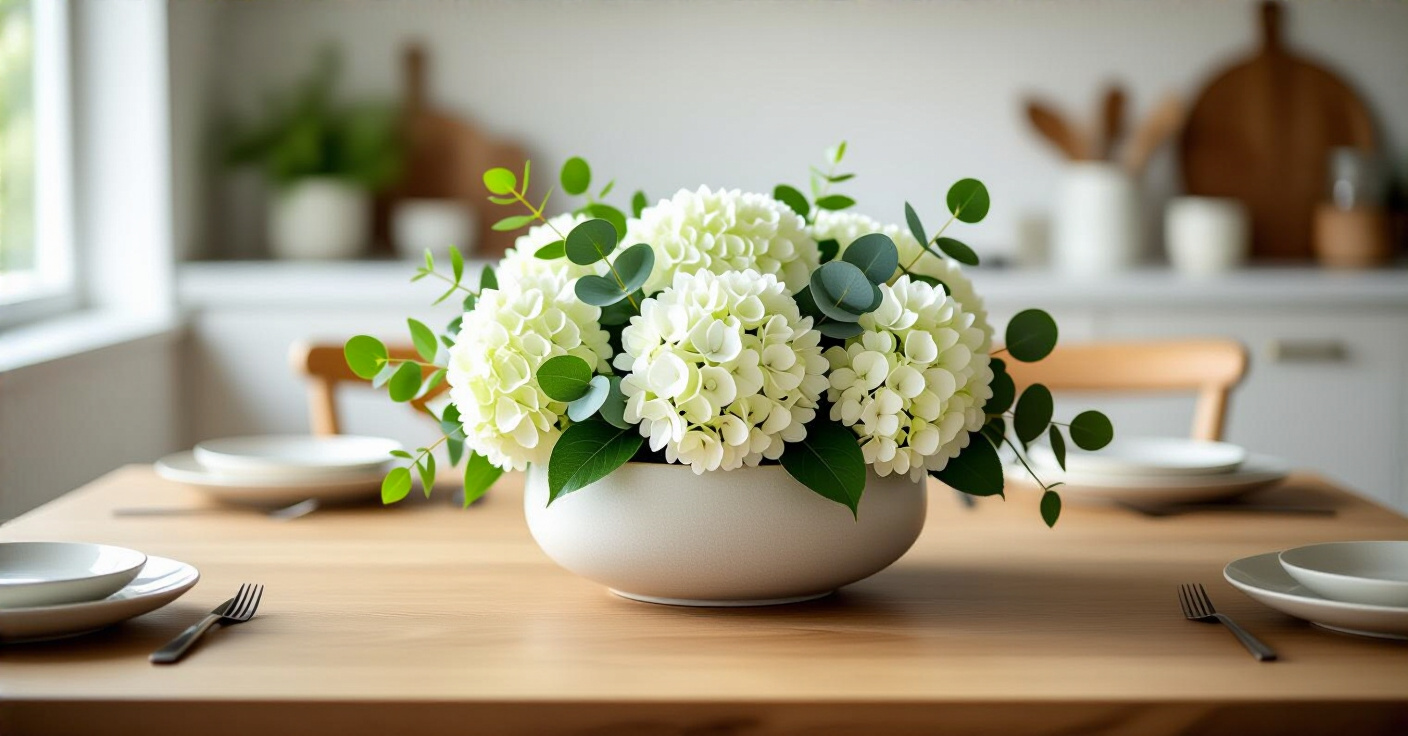
Discover 19 literary kitchen table centerpiece ideas. Learn expert tips from a designer to style a beautiful, functional display that tells your home's story.
Can we just talk for a moment about the kitchen table? In any home I visit, from a sprawling country estate to a tidy scholar’s apartment, that table is the true heart of the house. It’s where the mail is sorted, the homework is debated, the coffee is sipped, and the day is quietly contemplated. It’s a space of communion and thought. And yet, so often, it’s a visual no-man’s-land—either a barren wooden plain or a cluttered depot for keys and stray papers.
You’ve curated a home filled with books, art, and meaning. Your shelves tell the story of your intellectual journey. Yet, that central surface, the one that witnesses more of your daily life than any other, often remains a chaotic postscript. The secret isn’t to buy another generic vase from a catalog; it’s to treat your table with the same reverence as your library. It’s about composing a small, living narrative that honors the table’s role as the domestic scriptorium—the place where the story of your home is written, day after day. These nineteen principles are your guide to that composition.
Before you select a single object, you must do what every good librarian does: understand the space. This isn’t about rigid rules; it’s about respect for the environment. You wouldn’t place a massive folio on a delicate bedside table, would you? The same principles of scale, function, and purpose apply here. We’re laying the groundwork, drawing the map before we begin the journey.
Let’s start with the most basic, most ignored advice: measure your table. I know, it sounds tedious. But proportion is the silent poetry of design. An oversized centerpiece on a small table feels like a shouting guest in a quiet library, while a tiny arrangement on a massive farmhouse table is like a whispered word, lost in the expanse. It throws the entire room out of balance.
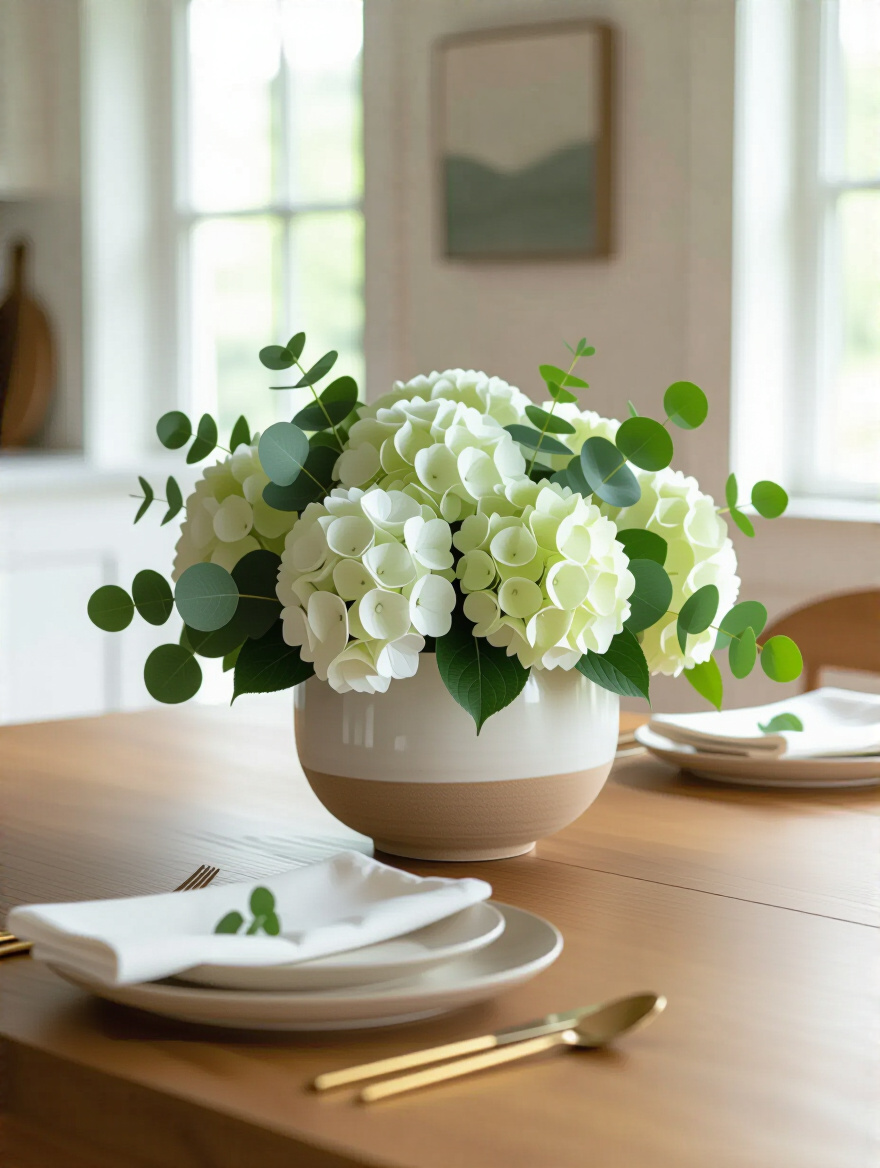
The goal is to create harmony, a visual composition where the centerpiece complements the table, rather than competing with it. A good rule of thumb, one that has served architects and designers for centuries, is that your arrangement should occupy no more than the middle third of the table. This leaves generous “margins” on either side for place settings, serving dishes, and the simple, necessary act of resting one’s elbows during a good conversation.
This foundational respect for scale isn’t just about aesthetics; it’s about creating a space that feels calm and intentional. It’s the difference between a table that feels thoughtfully occupied and one that feels thoughtlessly cluttered.
Now for a dose of reality. You need to be brutally honest about how your table is actually used. Is it a bustling hub for family breakfast, complete with flying cereal and spilled juice? Or is it a serene space where you and your partner read the paper over tea? The answer dictates the materials you can—and absolutely cannot—use.
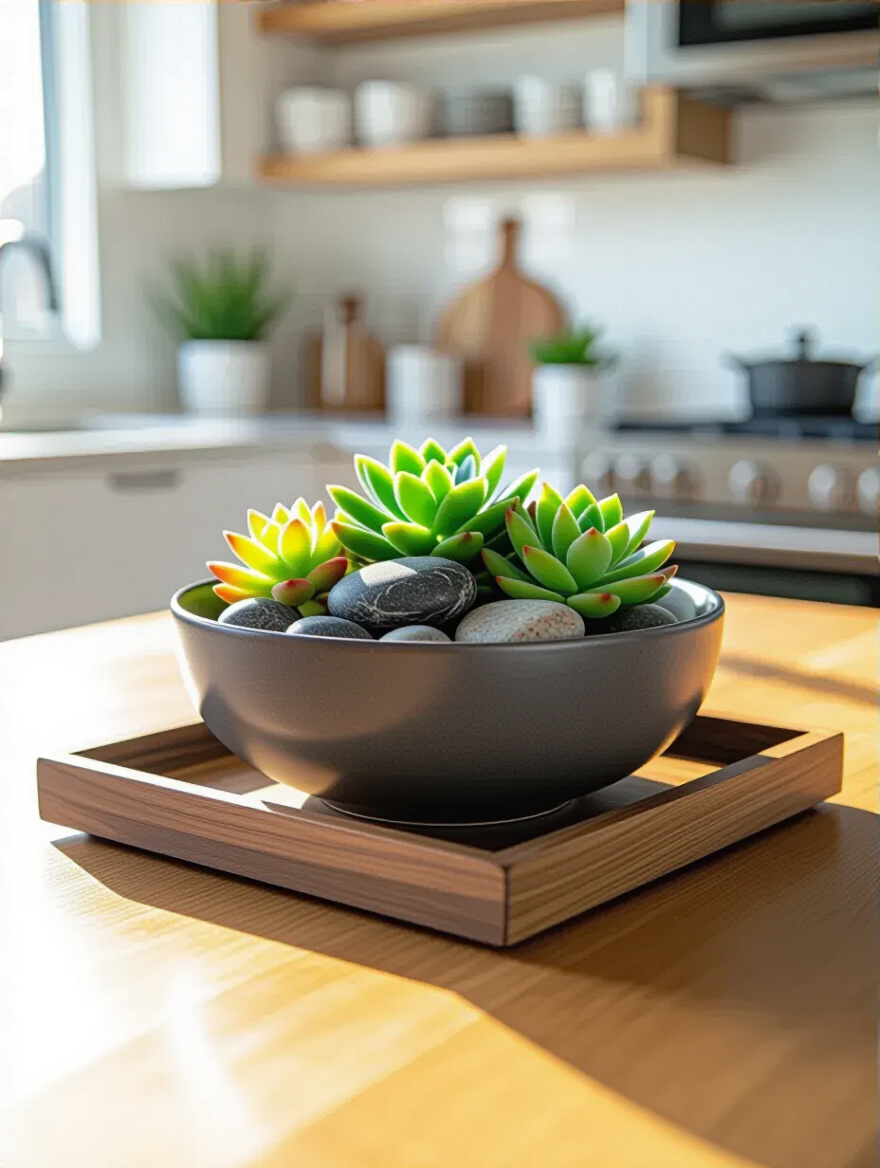
I once worked with a wonderful academic couple who had a delicate, unsealed stone sculpture as their centerpiece. It was beautiful. Then they had grandchildren. After one particularly sticky encounter with orange juice, that beautiful sculpture became a permanently stained testament to poor planning. Don’t let this happen to you. If your table is a high-traffic zone, you must choose materials that can withstand life: glazed ceramics, sealed wood, sturdy metals, high-quality faux botanicals. Fragility has its place, but it may not be in the crossfire of daily life.
Let the beautiful, sturdy things be your anchor. Your centerpiece should be a steadfast companion to your life, not a fragile victim of it.
Before you even think of shopping, take a walk through your own home. Look at your bookshelves, the art on your walls, the textiles you’ve chosen. What is the story they tell? Is it one of clean, modern lines? Or rustic, comfortable charm? Perhaps it’s eclectic and bohemian, a collection of treasures from a life well-traveled. Your centerpiece must be a chapter in that same book, not an insert from a different novel entirely.
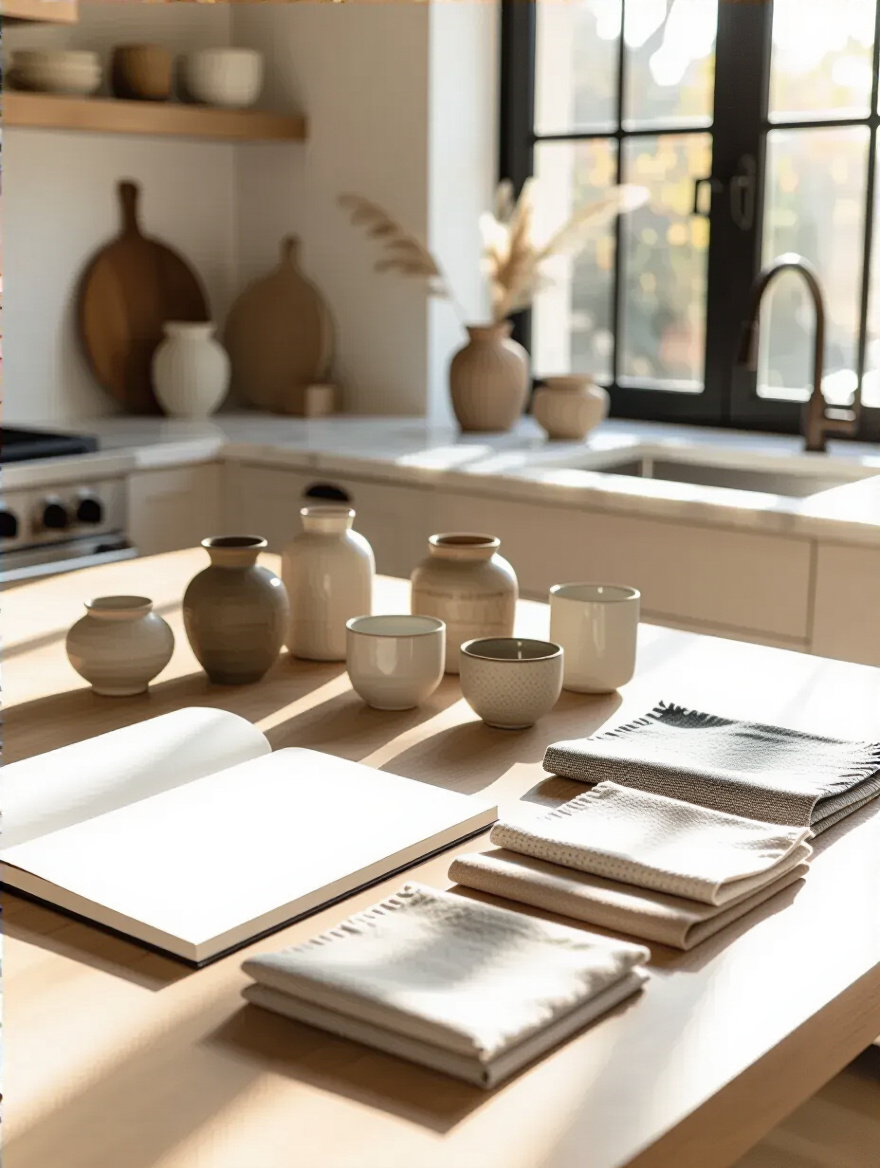
A client of mine was struggling because she kept buying trendy items she saw online, but they always felt “wrong” on her classic, Shaker-style cherry wood table. Of course they did. They were speaking a different language. We solved it by gathering items she already owned: a simple earthenware pitcher, a few well-worn wooden cooking tools, and a small stack of her favorite cookbooks tied with twine. It was authentic, it was cohesive, and it cost nothing. Don’t let a catalog tell you who you are; let your centerpiece be a reflection of your own curated life.
Creating a mood board—even a simple one on Pinterest or with clippings from magazines—can be an immensely clarifying exercise. It helps you distill your aesthetic into a clear vision before you bring a single new object into your home.
Let’s talk money, because a beautiful home shouldn’t be a source of financial strain. The biggest myth in interior design is that you have to spend a fortune to achieve elegance. It’s simply not true. What you need is not a large budget, but a clear one. A defined budget forces creativity; it pushes you to find beauty in simplicity, to repurpose, and to prioritize what truly matters.
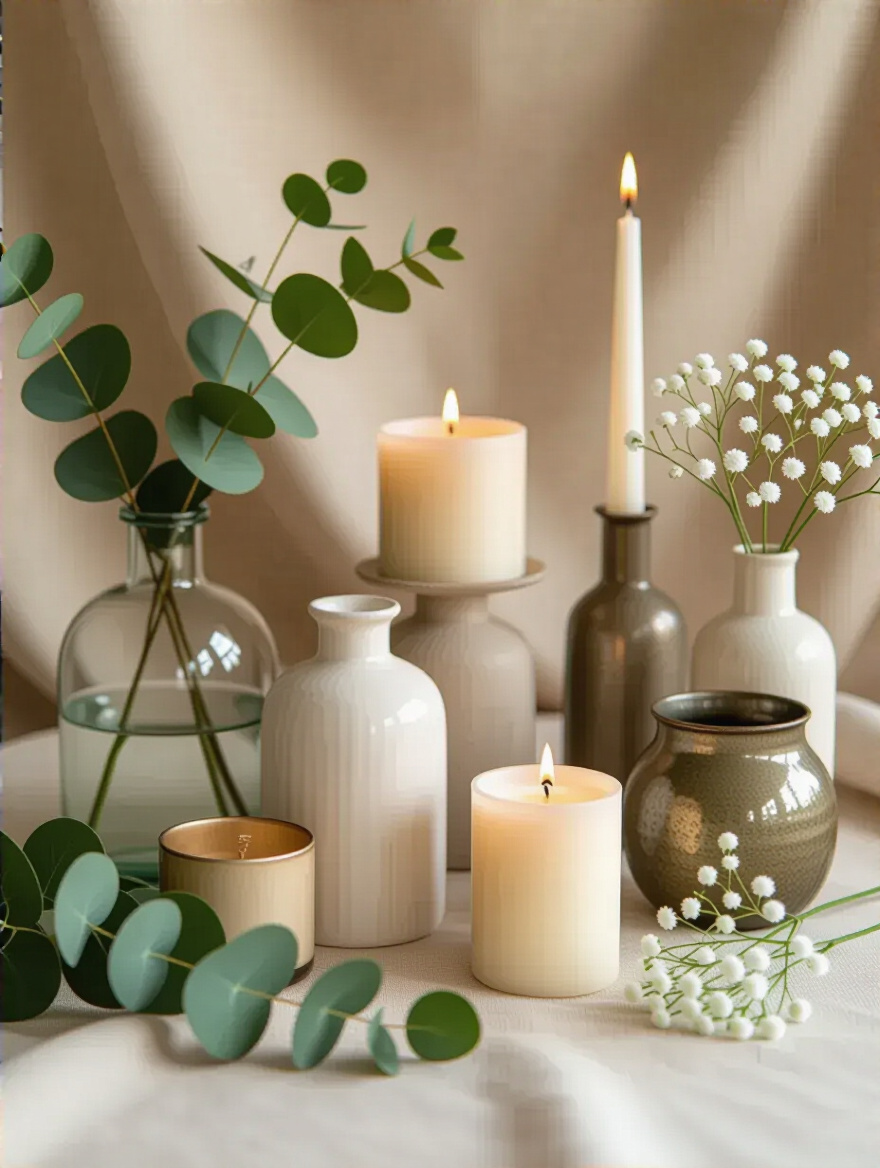
Instead of an expensive floral arrangement, perhaps you invest in three beautiful, artisan-made ceramic bud vases that you can fill with single stems from your garden or the farmer’s market. Over the course of a year, the vases pay for themselves. Instead of a high-end designer tray, maybe you find a gorgeous, timeworn silver platter at a local thrift store. The character is free. Decide on a total number, then allocate it. This keeps you focused and prevents those impulse buys that clutter our homes and drain our wallets.
Think of it as acquiring a collection. You might allocate a larger part of your budget to a single, timeless “first edition”—a beautiful bowl or tray—and then supplement it with more affordable “paperbacks” like candles or seasonal greenery. This strategic approach ensures every penny is spent with intention.
We’ve established the physical and financial boundaries. Now, we must consider the two elements that bring a composition to life: time and human connection. A centerpiece doesn’t exist in a static photograph; it exists in the flow of seasons and at the center of conversation. Thinking about these dimensions from the outset is what separates a mere decoration from a truly thoughtful design.
A home, like a good library, should feel alive. A centerpiece that never changes eventually becomes invisible; it’s like a book you’ve left on your nightstand for so long you no longer see it. Planning for seasonal rotation is the simplest way to ensure your space remains fresh and engaging, a quiet reflection of the world outside your window.
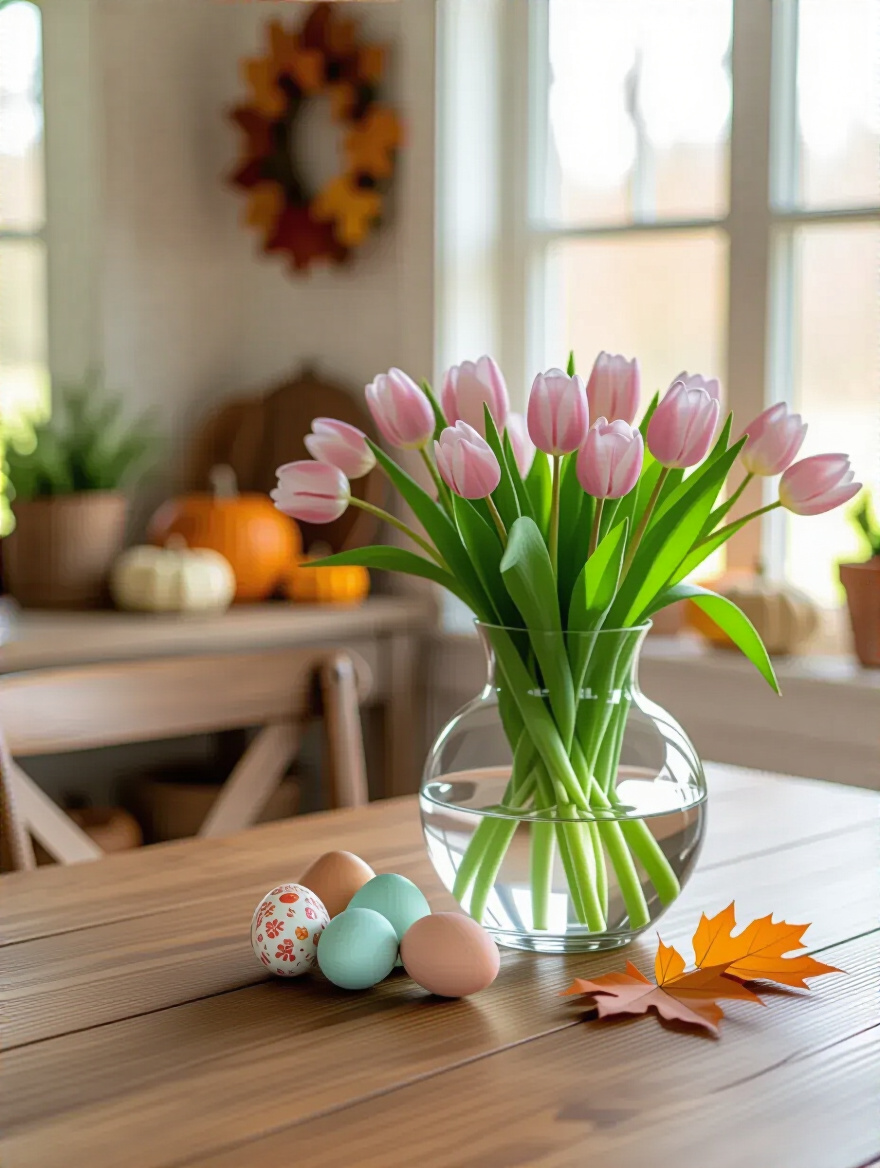
This doesn’t mean a complete overhaul four times a year. That’s exhausting and wasteful. The secret is to build your centerpiece around a versatile, season-neutral core—a beautiful wooden tray, a simple glass bowl, or a set of brass candlesticks. These are your “classics.” Then, you simply swap out the smaller, accent elements. In autumn, fill the bowl with small gourds and acorns. In winter, switch to pinecones and mercury glass ornaments. For spring, a bed of moss and a few birds’ eggs. For summer, seashells or a collection of smooth river stones. The change is small, but the impact is profound.
This practice connects your indoor life to the natural rhythms of the year, a grounding tradition in an often-chaotic world. It’s a small ritual that keeps your home—and your attention—feeling fresh and alive.
This is my one non-negotiable rule. Your centerpiece must never, ever obstruct the view across the table. Its entire purpose is to enhance the experience of gathering, not to build a beautiful wall between you and your guests. I have sat at too many dinners craning my neck around a towering floral arrangement, feeling utterly disconnected from the person across from me. It’s a complete failure of design.
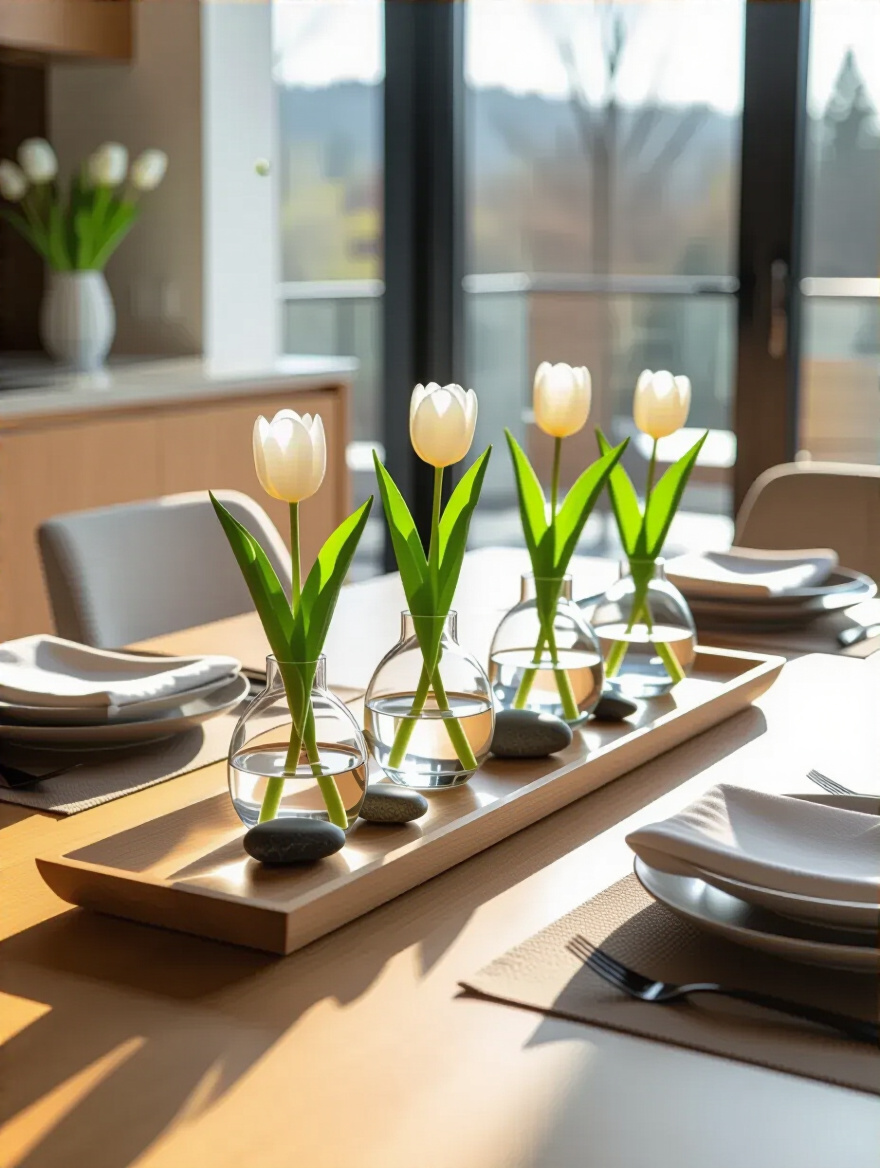
Before you finalize any arrangement, sit down. Sit in every chair. Can you make easy eye contact with every other seat? If the answer is no, it’s too tall. The sweet spot is generally under 12 inches, or roughly the height of a wine bottle. This allows for visual interest without sacrificing the fundamental human need for connection. A centerpiece is the center of the table, but the conversation is the center of the meal. Never forget which one is more important.
If you absolutely fall in love with a taller element, like graceful branches in a vase, consider a “moveable feast.” Design the centerpiece to be easily relocated to a sideboard or counter just before guests sit down, and then returned after the meal. This way, you can enjoy its dramatic beauty without sacrificing conviviality.
With our plan in place, we can begin the most enjoyable part: selecting the objects themselves. This is not about accumulation; it is about curation. Each element should be chosen with purpose, contributing to the overall narrative of your composition. We’ll start with the foundational pieces that provide structure and longevity.
Think of a tray or runner as the binding of a book. It’s the single element that gathers all the disparate pages—your candles, vases, and objects—and transforms them into a cohesive whole. Without it, your centerpiece items can look like a random assortment of things just sitting on a table. With it, they become an intentional, curated collection.

A tray creates a defined stage for your arrangement, a visual frame that says, “This is the centerpiece.” It instantly reduces the feeling of clutter. But its greatest virtue is practical: mobility. When it’s time to eat, you don’t have to move ten individual items. You lift one tray. This single, simple act makes the difference between a centerpiece that is a joy and one that is a nuisance. Whether it’s a rustic wooden plank, a sleek metal tray, a woven seagrass placemat, or a simple linen runner, this foundational piece is the anchor of your entire design.
Look for a material that either complements or offers a pleasing contrast to your table. A dark slate tray on a light oak table, for example, creates a beautiful, grounding effect. Let this be your first and most considered purchase.
A composition with elements all at the same height is visually monotonous. It’s like a sentence written entirely in lowercase—readable, but lacking emphasis and rhythm. Introducing varied heights is what creates a dynamic visual landscape, drawing the eye in and inviting it to explore. It’s the difference between a flat photograph and a rich sculpture.
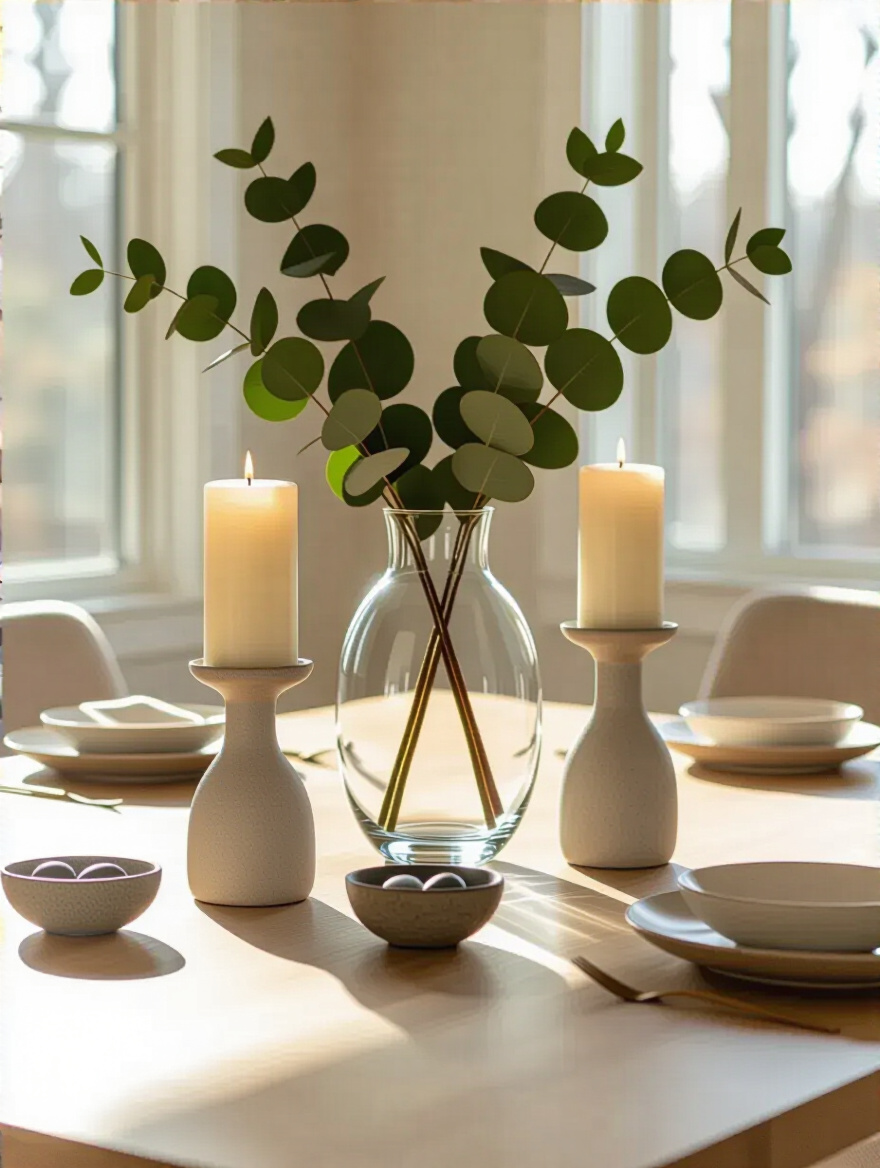
You can achieve this in many ways. A trio of candlesticks of varying heights is a classic for a reason. A tall, slender vase paired with a low, wide bowl creates an elegant dialogue of forms. You can also create height artificially. I’m a great lover of using a small stack of beautiful, clothbound books as a pedestal to elevate a smaller object. It’s a perfect nod to the literary life of the home and adds a layer of intellectual charm.
The key is to create a pleasing rhythm. Think of it as a small skyline on your table. Your tallest object is the spire, drawing the eye upward, while medium and lower elements provide the grounding and context. This simple technique is what will make your arrangement look thoughtfully composed rather than randomly placed.
I adore fresh flowers, but let’s be honest: they are a fleeting luxury. For the everyday centerpiece, you need something with more staying power. This is where high-quality faux florals and long-lasting greenery come into their own. The operative word here is high-quality. We have moved far beyond the waxy, plastic horrors of the past. Today’s faux botanicals can be incredibly realistic, mimicking the subtle imperfections and textures of the real thing.
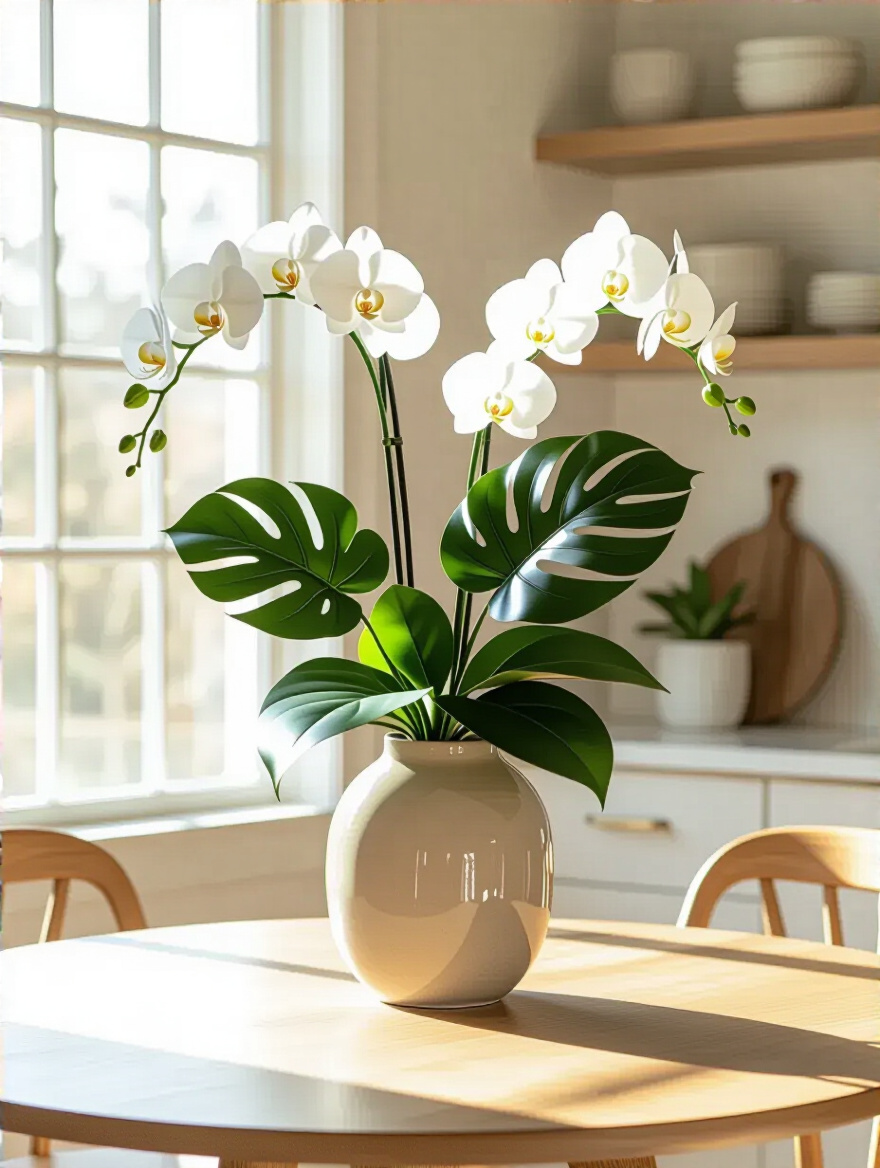
An investment in a few truly excellent faux stems—a branch of eucalyptus, a spray of olive leaves, or a single, perfect orchid—can provide a year-round foundation of green. They bring a touch of nature indoors without the wilting, the water changes, or the weekly expense. Preserved greenery, like dried eucalyptus or boxwood, is another wonderful option, offering authentic texture and subtle, natural scent.
The trick is to treat them as you would real stems. Place them in a beautiful vase (with or without water, depending on the realism of the stems) and dust them regularly. This small act of care maintains their beauty and ensures they provide a constant, quiet touch of life to your table.
A centerpiece doesn’t have to be purely decorative. In a hardworking space like a kitchen, the most elegant solutions are often those that blend beauty with utility. Integrating functional elements is a brilliant way to keep essentials at hand while elevating their status from simple tools to objects of beauty.
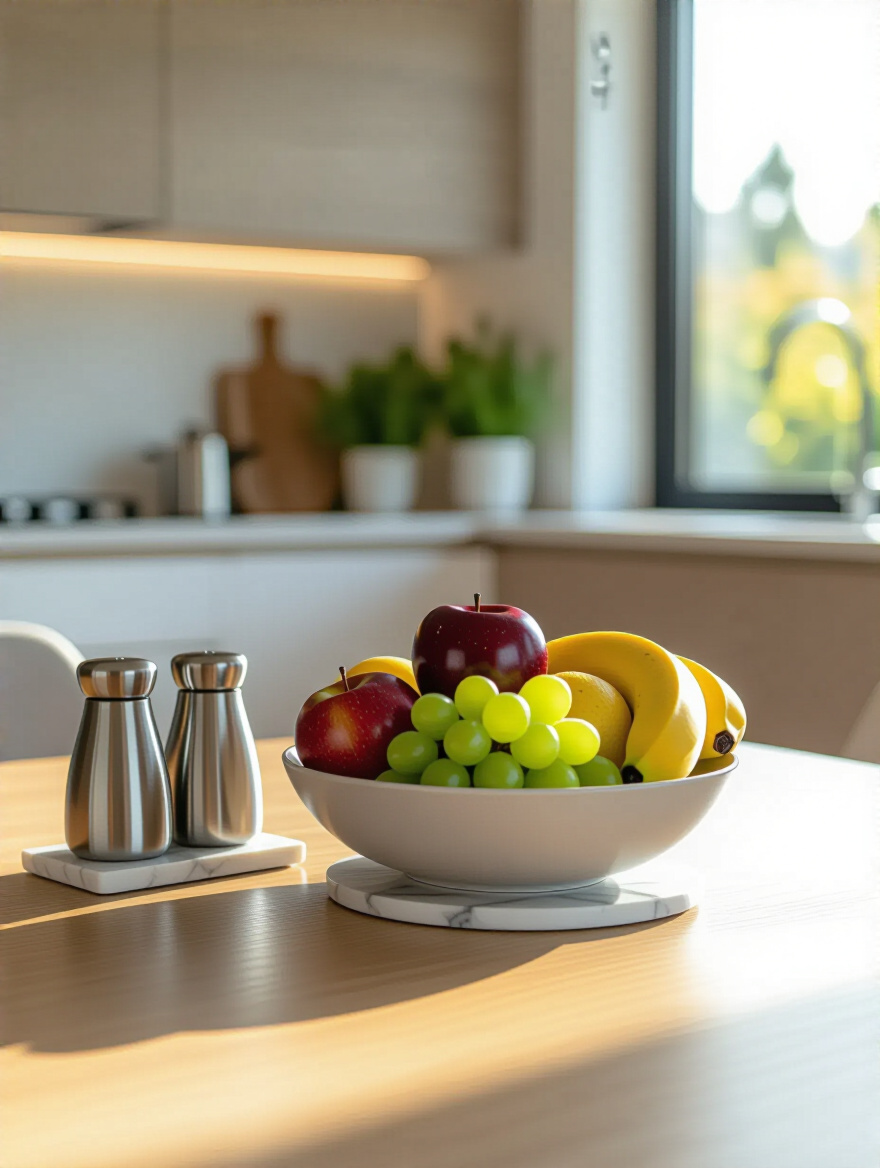
A gorgeous wooden or ceramic bowl filled with seasonal fruit is a classic example. It provides color, shape, and a healthy snack within arm’s reach. A beautifully designed salt and pepper mill set, a small stoneware crock for sugar, or an elegant glass cruet for olive oil can be integral parts of your composition. It’s about celebrating the objects of daily life, not hiding them away.
When I was studying in Florence, I was struck by how the simplest family trattorias left a bottle of good olive oil, a small dish of salt, and a basket of bread on the table. It wasn’t “decoration”; it was a statement of hospitality and purpose. You can bring that same spirit to your own table by choosing well-designed, beautiful versions of the things you use every day.
We have assembled our primary elements—the foundational, the structural, and the functional. Now we turn to the more ephemeral qualities, the ones that engage the other senses. Texture, scent, and light are the subtle grace notes of a composition. They add a layer of sensory richness that transforms a centerpiece from something you just look at to something you experience.
A centerpiece made entirely of smooth, glossy surfaces can feel cold and sterile. Texture is what provides warmth, depth, and tactile interest. It’s what invites you to touch, to connect with the objects on a physical level. Think about the comforting feel of a rough, hand-thrown ceramic pot, the organic weave of a seagrass basket, or the rustic grain of a piece of driftwood.
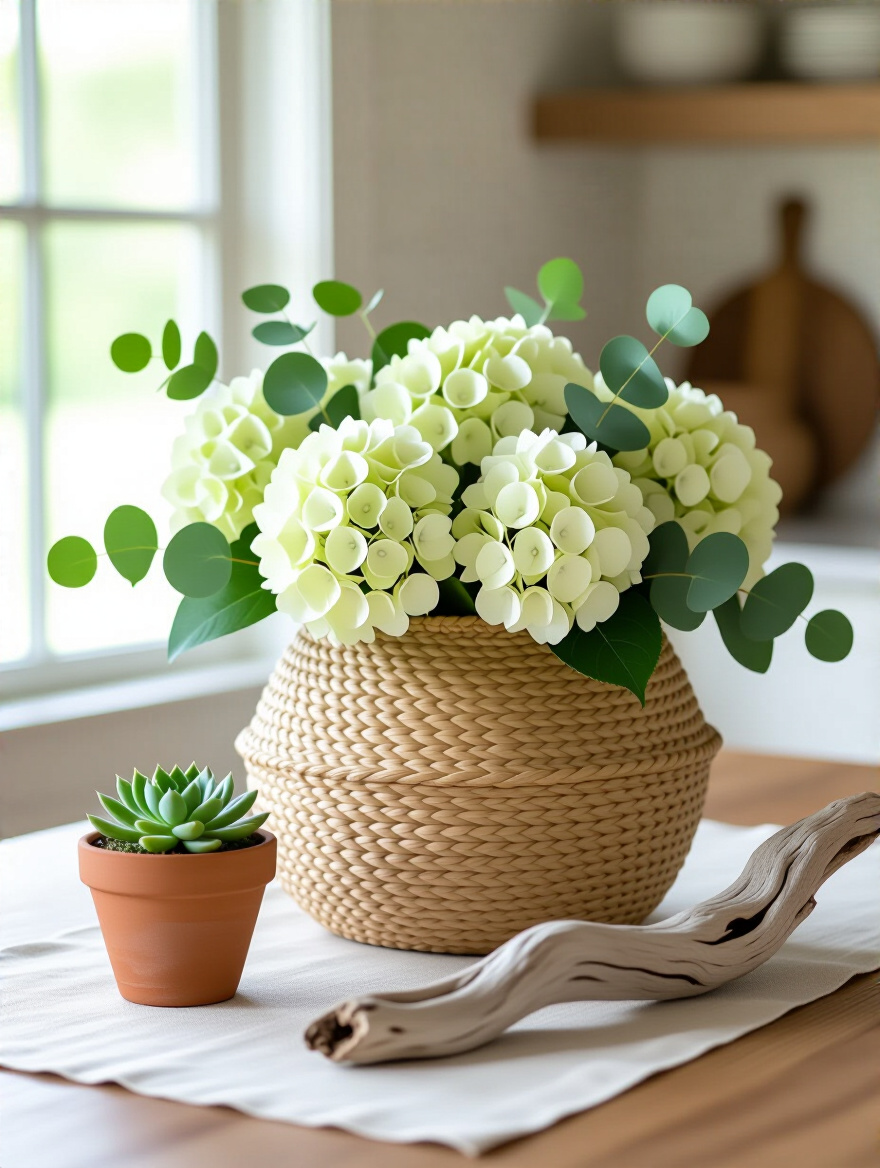
Contrast is your greatest tool here. Pair a smooth glass vase with a rough linen runner. Place polished river stones inside a rustic wooden bowl. Juxtapose the cool matte finish of a concrete planter with the soft foliage of a plant. Each texture highlights and enhances the qualities of the other, creating a richer, more complex visual story.
This is a place to celebrate imperfection. The subtle cracks in a glaze, the weathered patina on a piece of wood, the slight irregularities in a handwoven basket—these are the details that give an object character and soul. They tell a story of craftsmanship and time, making your centerpiece feel collected and authentic, not mass-produced.
Scent is the most powerful and underutilized tool in creating atmosphere. It’s directly linked to memory and emotion. A subtle fragrance can make a space feel clean, calming, or cozy, profoundly shaping the experience of being at the table before a single bite of food is taken. But the key, especially in a dining area, is subtlety.
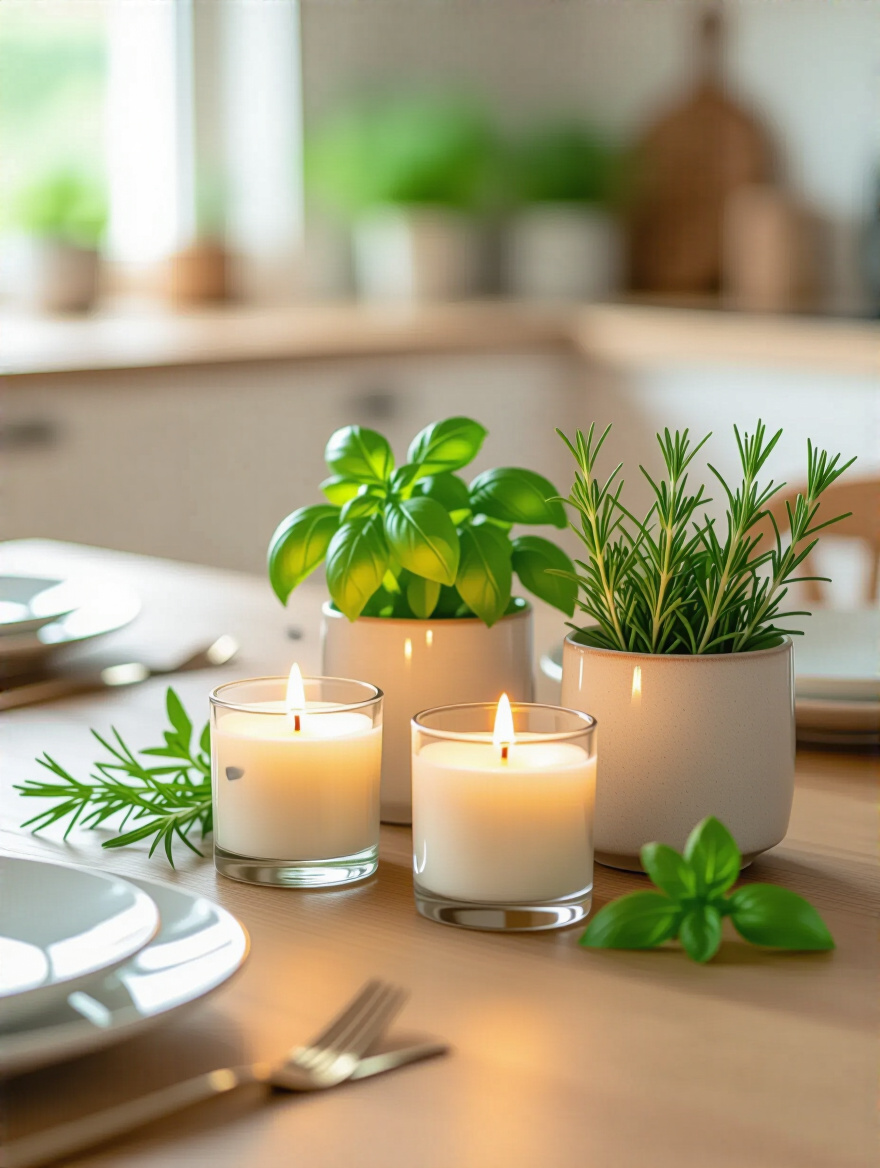
Strongly perfumed candles are a terrible idea. They compete with the aroma of the food, which should always be the star of the show. Instead, opt for candles with very light, natural scents like beeswax, bayberry, or a delicate, clean linen. Even better, use fresh herbs. A small pot of rosemary or mint, or a few sprigs of lavender in a bud vase, will release a gentle, natural fragrance that complements a meal rather than clashing with it.
I once advised a client to place a small bowl of fresh lemons on her table, with a few cloves pricked into one of them. The clean, citrus-and-spice scent was invigorating and welcoming, and the bowl itself provided a beautiful pop of color. It’s these multi-sensory details that elevate a space from simply decorated to truly welcoming.
Nothing creates intimacy and warmth quite like the soft flicker of candlelight. But open flames, especially in a home with children, pets, or just a lot of activity, can be a source of constant worry. This is where modern technology offers a truly brilliant solution: high-quality LED candles and lanterns.
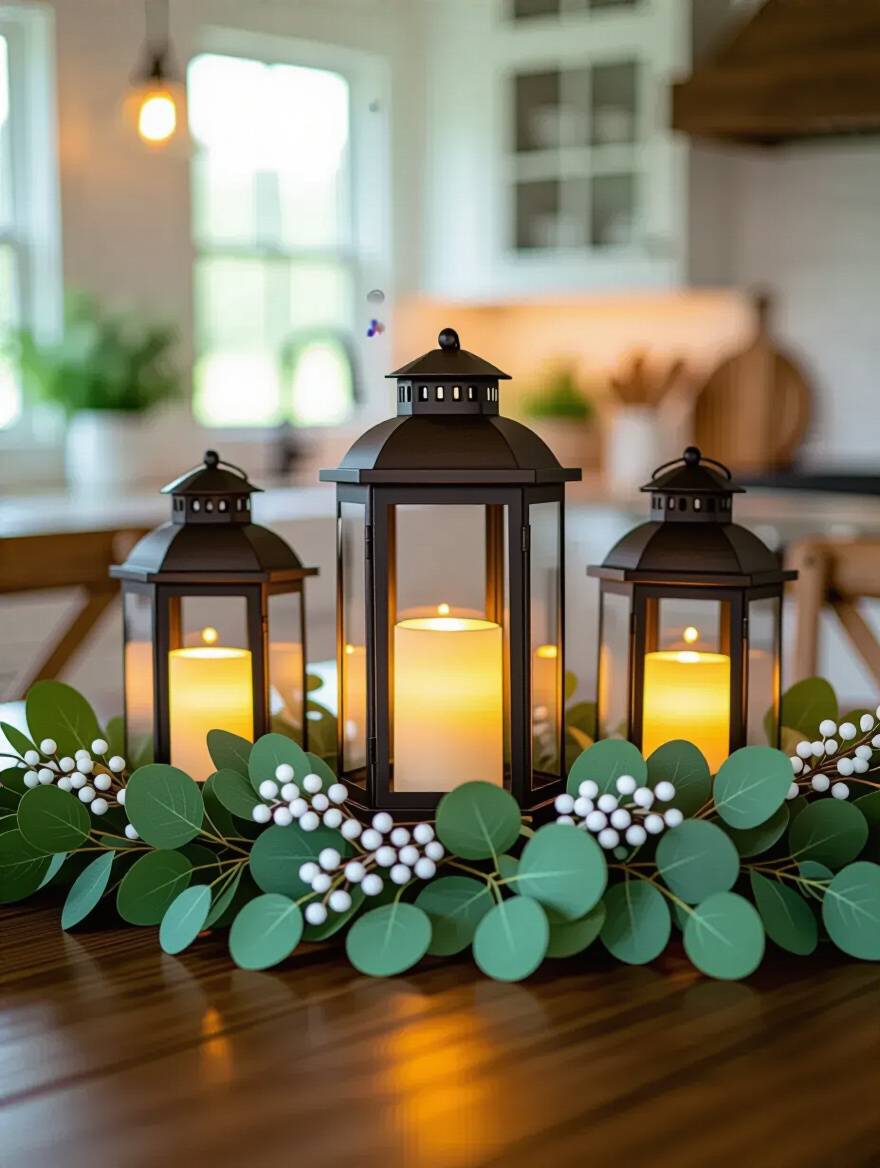
The best modern LED candles have a subtle, realistic flicker and a warm, inviting glow that is nearly indistinguishable from the real thing. They provide all the ambiance with none of the risk. You can tuck them into greenery, place them inside glass hurricanes, or cluster them on a tray without a single thought about fire hazards or messy wax drips. Many even come with timers, so you can set them to turn on automatically at dusk, welcoming you home with a gentle glow.
This isn’t about replacing the special ritual of lighting real candles for a dinner party. It’s about being able to enjoy that same magical ambiance every single day, safely and effortlessly. It democratizes warmth and beauty, making them a consistent part of your daily life, not just a special-occasion treat.
Now that you’ve gathered your collection, it’s time for the final act of curation: arranging it. These are not rules set in stone, but rather time-tested principles of composition that artists and designers have used for centuries to create balance, interest, and harmony. Think of them as the grammar of your visual language.
There’s a reason photographers, florists, and designers are all obsessed with the “Rule of Three.” Our brains are simply wired to find groupings of odd numbers—three, five, seven—more visually appealing and natural than even-numbered groupings. An arrangement of two or four items can feel static and formal, while an arrangement of three creates a sense of dynamic balance and movement.
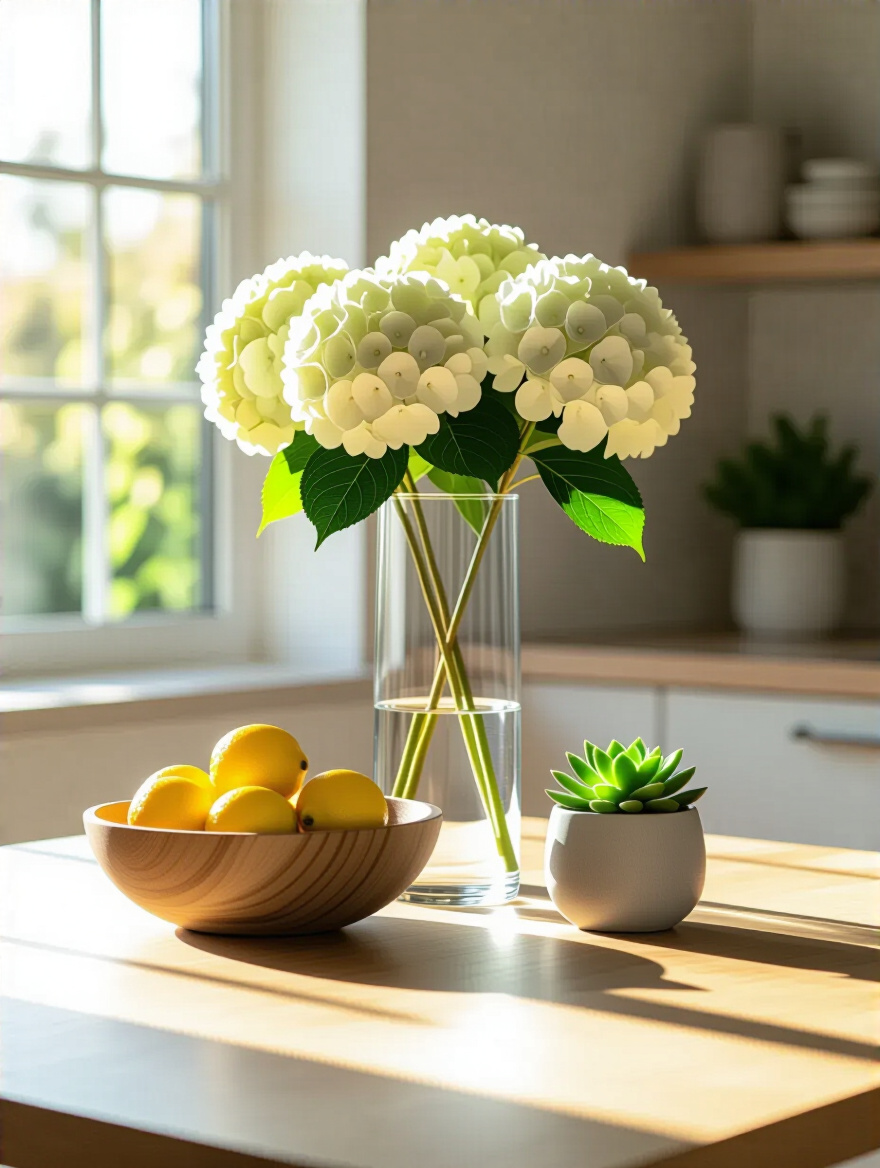
When arranging your elements, think in threes. One tall vase, one medium bowl, one small candle. The varying heights and shapes create a pleasing visual triangle that your eye can easily navigate. This principle forces you to create hierarchy and relationship between the objects, making them feel like a unified group rather than a simple lineup.
This doesn’t mean you must have exactly three items. You could have one primary object (a tray with five small votives on it) or a larger collection grouped into smaller, odd-numbered clusters. The point is to avoid the rigid symmetry of even numbers, which can look contrived. Embrace a little asymmetry; it’s what makes a composition feel alive.
A well-styled centerpiece has depth. It’s not a flat, two-dimensional picture. You create this depth through the simple act of layering and overlapping. Don’t be afraid to place one object slightly in front of another. Let the leaves of a plant spill over the edge of its pot and onto the tray below. Casually drape a linen napkin under one corner of a stack of books.
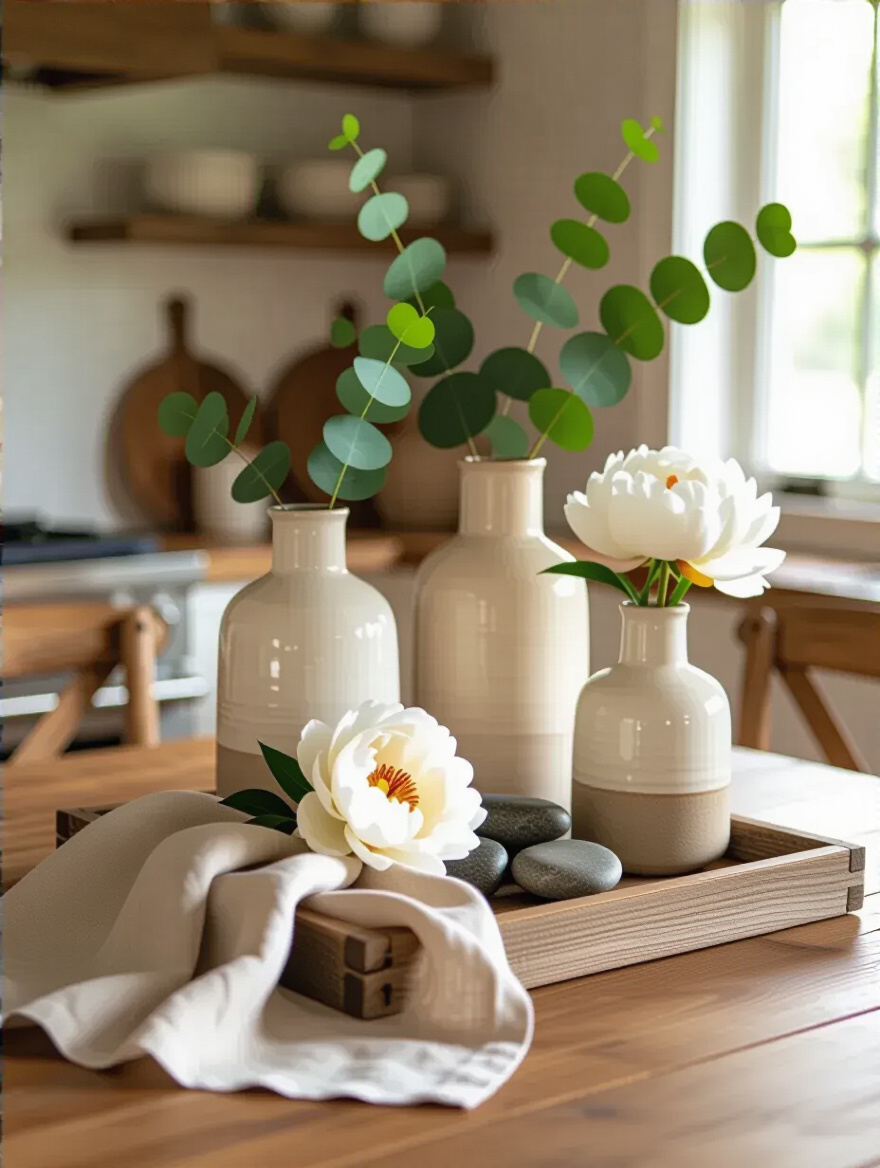
This technique creates a sense of casual, lived-in elegance. It makes your arrangement feel as though it evolved naturally over time, rather than being placed with rigid precision. Overlapping connects the individual pieces, weaving them together visually and creating a more integrated and sophisticated whole. A common mistake is to give every object its own “personal space,” which can make the arrangement feel disjointed.
Think about how you might arrange books on a shelf or photos on a mantel. You instinctively overlap them, lean them, and create little vignettes. Apply that same natural instinct to your kitchen table.
I mentioned this when we discussed trays, but it bears repeating because it is the single most important factor for long-term success. If your centerpiece is a pain to move, it will eventually be relegated to a dusty corner, or you will simply stop using your table for meals. The centerpiece that cannot be easily moved is a failed centerpiece. Period.
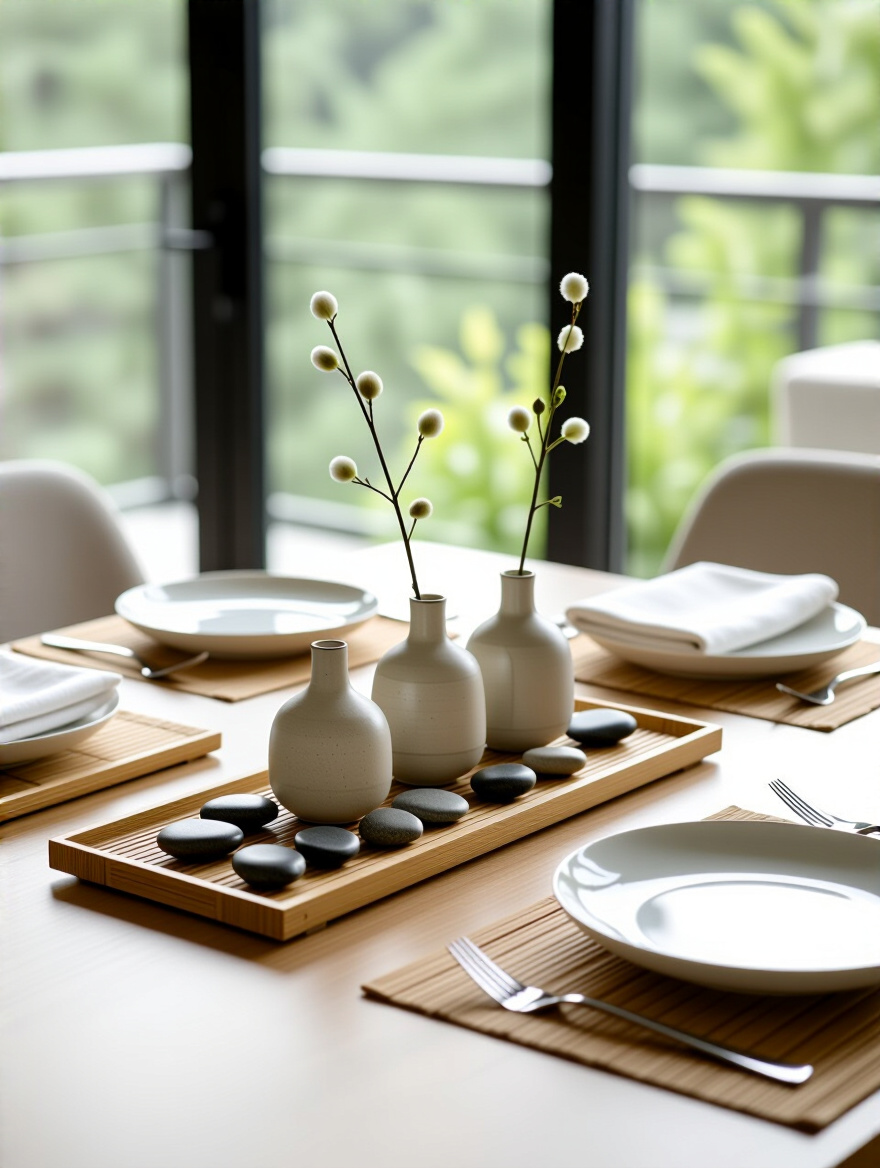
Consolidating your arrangement onto a single tray, platter, or runner is the ultimate shortcut. It turns a multi-step clearing process into a single, effortless action. Before you commit to any design, do the “lift test.” Can you comfortably and safely pick up the entire arrangement and move it to a nearby counter or sideboard? If not, you need to simplify, lighten, or consolidate.
A client of mine brilliantly repurposed a beautiful wooden lazy Susan for her centerpiece. She could simply rotate it to access different items, and when it was time to eat, she could lift the whole thing off in one go. It was a perfect marriage of beauty, function, and effortless mobility.
We’ve already discussed the importance of seasonal rotation, but this applies specifically to holidays and special celebrations. A few simple, thoughtful additions can transform your everyday centerpiece into a festive focal point, making your home feel instantly ready for the occasion. There is absolutely no need to buy a whole new set of decorations for every holiday.
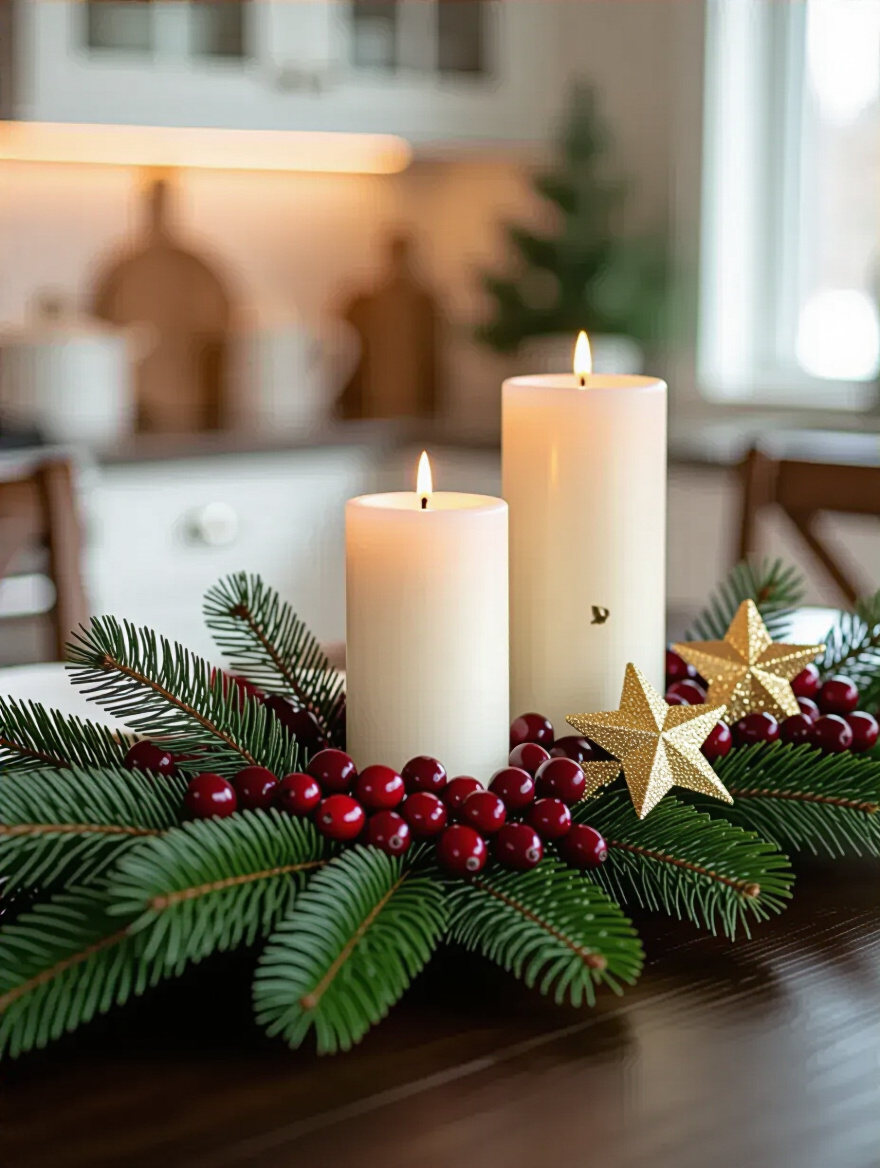
For the winter holidays, tuck a few sprigs of fresh cedar and some shiny ornaments into your existing arrangement. For a birthday, add a small bud vase with the person’s favorite flower. For autumn, swap your usual candles for ones in a warm, pumpkin-spice hue and scatter a few miniature gourds around the base. It’s about small, impactful gestures, not a complete redesign.
This practice keeps your home feeling celebratory and current, and it’s a wonderful way to involve the whole family. Sending children out to find the perfect pinecones for the winter centerpiece or having them choose the ribbon for a birthday arrangement turns decoration into a meaningful shared activity.
A great library requires a dedicated custodian to keep it in order, and so does a great centerpiece. The final two principles are about the ongoing care and evolution of your design. This is what ensures your centerpiece remains a source of delight and inspiration for years to come, rather than becoming a dusty, neglected artifact.
Dust is the quiet enemy of beautiful interiors. An intricate centerpiece that is a nightmare to clean will quickly become a dusty eyesore. When selecting your core items, give serious thought to their maintenance. Smooth, non-porous surfaces—glass, glazed ceramic, polished metal—are your best friends. They can be wiped clean in seconds with a damp cloth.
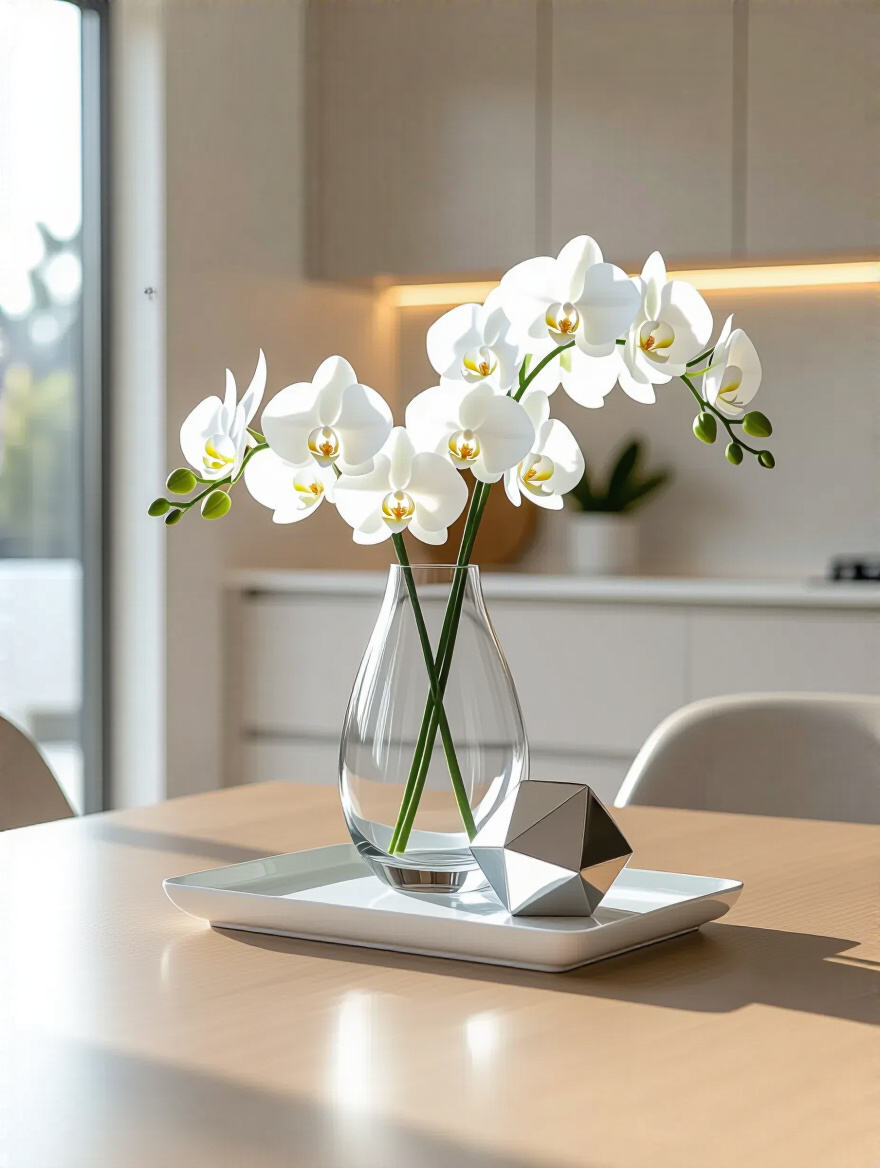
Avoid things with lots of tiny, dust-trapping crevices, like intricate wicker baskets or fussy dried floral arrangements, unless you are genuinely committed to their regular, meticulous cleaning. I’m not. A centerpiece should simplify your life, not add another tedious chore to your list. The easier it is to clean, the more likely you are to keep it looking beautiful.
I often advise clients to think of the “30-second wipe down” test. Can you make your centerpiece look fresh and clean in half a minute? If the answer is yes, you’ve chosen well. It’s a practical consideration that has a huge impact on your long-term satisfaction.
Finally, remember that your home is not a museum. It is a living, breathing space that evolves as you do. The centerpiece that you loved last year may not speak to you in the same way today. It is perfectly okay—in fact, it is essential—to periodically reassess and update. This prevents your decor from becoming stagnant and ensures it continues to be a true reflection of you.
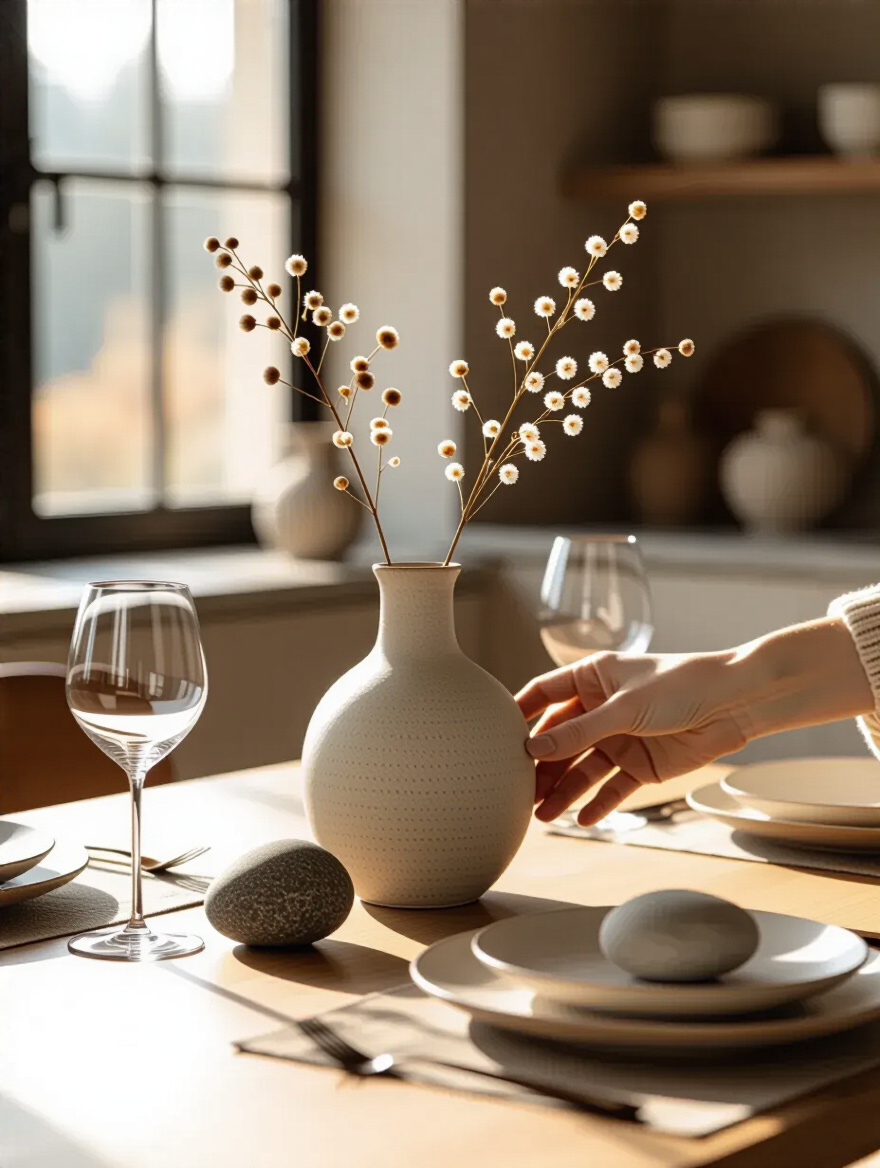
Every few months, take a fresh look at your arrangement. Is it still bringing you joy? Does it feel harmonious with the rest of your space? Perhaps you just need to swap out one element for another you have elsewhere in the house. Or maybe it’s time for a more significant change. I have a small collection of beautiful ceramic pieces, and I rotate a different one onto my dining table every season. It’s a simple act that keeps the space feeling curated and new.
Give yourself permission to play, to experiment, and to change your mind. Your centerpiece is a small, personal expression. Let it grow and evolve, just as you do.
Your kitchen table is far more than just furniture; it is the silent witness to the quiet rituals and grand conversations that make up a life. To adorn it thoughtfully is not an act of frivolous decoration, but an act of honor for the central role it plays in your home. By blending the practical wisdom of a librarian with the aesthetic eye of a designer, you can create a centerpiece that is not just a collection of objects, but a composition—a small, living story that is both beautiful to behold and a joy to live with.
Don’t let that precious space remain an afterthought. Take one idea from this collection, one principle that resonates with you, and begin today. Gather a few beloved objects, find a simple tray, and play with the arrangement. You have the power to transform that surface from a place of clutter into a focal point of meaning and beauty. Curate it, care for it, and let it be a quiet testament to the well-read, well-lived life you are building every day.